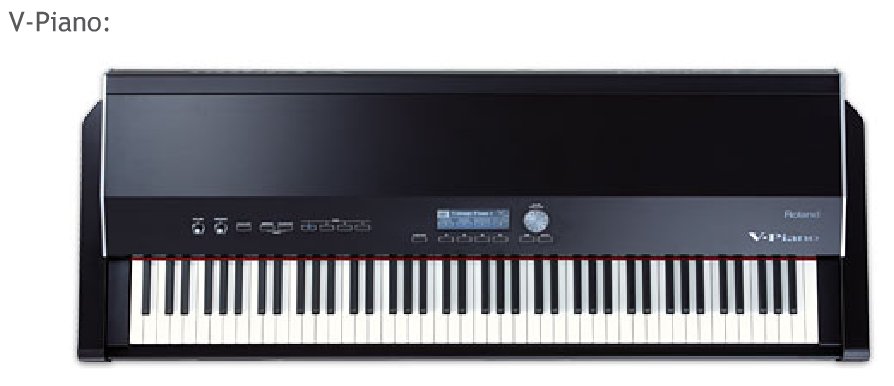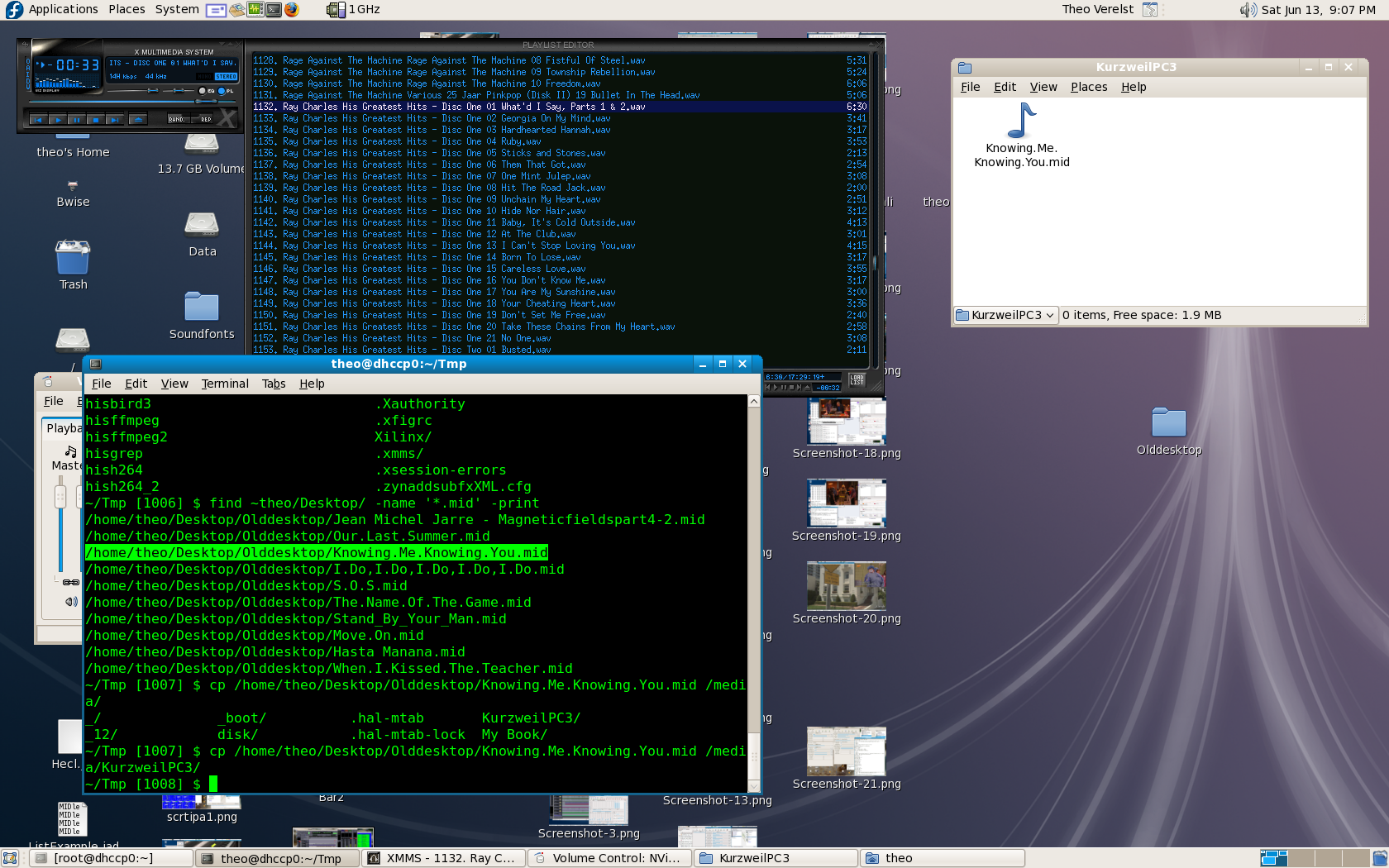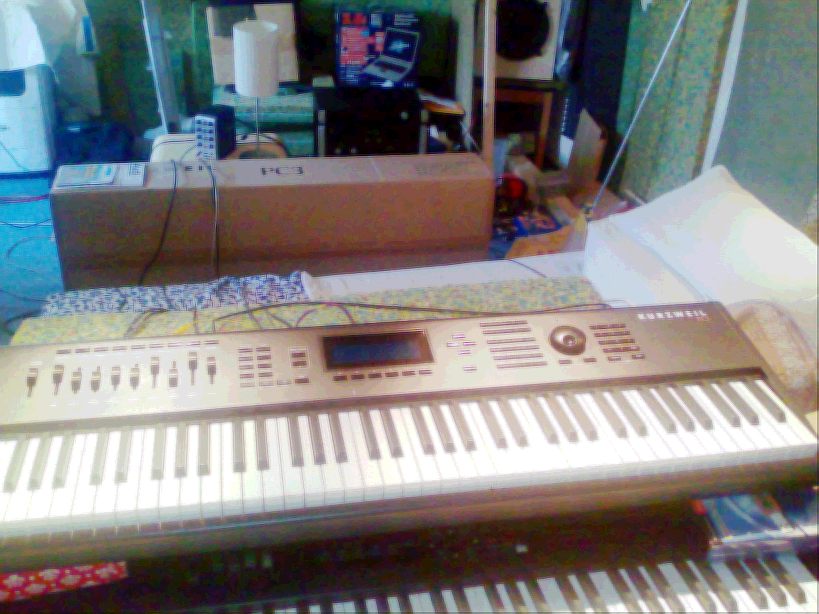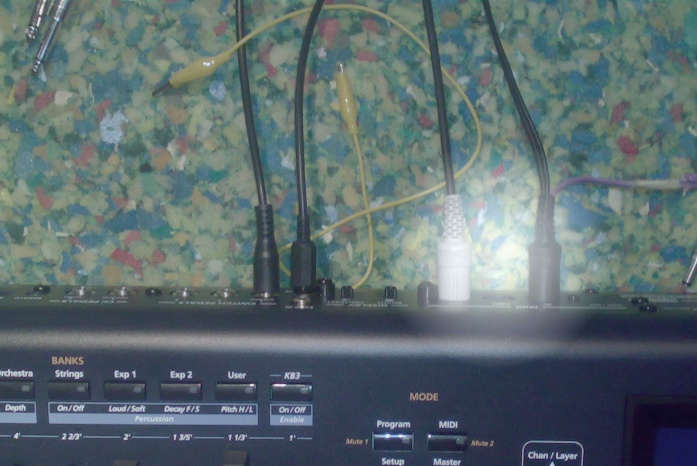Theo Verelst Local Diary Page 77
I've ditched the usual header for the
moment, I think it doesn't help much anyhow.
This page is copyrighted by me, and may be read and transferred by any
means only as a whole and including the references to me. I
guess that's normal, the writer can chose that of course, maybe
Ill make some creative commons stuff one day, of course I have
made Free and Open Source software and even hardware designs available!
This
page is under construction, so check back later, too.
June 9, 2009
High Technology.
The best epiano in the world?
For non-synthetisists, electric piano can mean a piano with
electromechanical or electronic piano, traditionally, which both makes
not for a piano sound replication, but something a bit piano-like,
bright fast attack of the wave and slow duller decay with an
interesting sound spectrum, and a possibly damped release curve.
The (Fender) Rhodes and Wurlitzer were probably the most well known
electric piano but short string based machines like the Yamaha CS80 and
such are also known and appreciated.
Currently I suppose electric piano could included sampled pianos, which
of course a whole generation grew up with. I´ve witnessed quite a
few being avaible for the computer, which is yet another branch, but of
the same principle: sampled. Those were available for a long time
already in keyboard form (or as rack unit), in all kinds of variations,
probably often more musically made and possibly more complicated,
requiring special computer-type circuits being built in.
Other piano type sound can be made with FM synthesis (Yamaha made
digital pianos with that, too) or combined wave tables and other
general synthesis forms.
Traditionally since a lone time, preceded by mostly not so great
imitations or special machines (like Roland did a special synthesis
type series I think were called MKS-1000 and derivatives, which I think
I had a sequel of some kind of with the HP3000s which is similar to the
well known stage piano RD300, same synthesis) Kurzweil (mainly the man
himself, Ray Kurzweil, who also invented digital automatic reading
machines) made famous piano imitation with a form of sampling and
advanced processing, which still now is probably amoung the most
recognized good and varied sounding digital pianos on the planet.
Now, probably at least with slight influence of my Free and Open
Source, publically demonstrated String Simulator (Physically Modelled
Strings), which in turn were inspired by Yamaha´s Physical
Modeling based synthesizers, there is another form:

The Roland V-piano.
That´s a algorithm which simulates the behaviour of the strings
vibrating and even the cross-coupled vibrations, and the harp and
enclosure of the piano to get a realistic (grand) piano sound, with 128
strings being simulated.
Listen to the Duke (A well known Jazz/Fusion keyboardist originally
from San Fransisco, who was an influence on me when I started to play
such music) on the Roland site to get a good impression of the
difference between samples and this alive sound..
Can't demo that one for you, sorry...
Working with the PC3
See my Wiki
page on the Kurzweil, too.
A short musical excerpt I tried some combined sounds on, recorded with
Cubase and some processed with the Lexicon Pantheon plugin:
kurz1 [.wav] (5.6 MB, 24 bits,
44.1kHz) kurz1 [.mp3] (0.7
MB, 256kbps)
I used the digital output, which sounds great on the Omega converter. I
think I noticed a difference after playing back the Cubase recording,
but I didn´t really check the recording sync settings this time.
Within a week I have made these sounds, and recordings of them, using
24 bit 44.1kHz TOS link:
brasssynthtv [.wav] (7.4
MB) brasssynthtv [.mp3]
(1.3 MB)
effbassdrum [.wav] (9.4 MB) effbassdrum [.mp3] (1.7 MB)
hammond1 [.wav] (13.1 MB) hammond1 [.mp3] (2.4 MB)
piano1kurz [.wav] (8.1 MB) piano1kurz [.mp3] (1.5 MB)
synthsupermoogtv [.wav]
(8.1 MB) synthsupermoogtv [.mp3]
(1.5 MB)
synthsupermoogtvpad [.wav]
(5.0 MB) synthsupermoogtvpad
[.mp3] (0.9 MB)
AnaFMSmpljoy2c
This is an absolutely great patch for the fusion and advanced theatre
organ combi sound lovers, which consists of the mega layer combination
of using a 6 operator FM with 4 osc moog AND 2 layers with samples. Very musically usable, for the
advanced, and also nice sound for playing a basic song with (I think it
was a great succes anyhow). Lots of sliders available (see info).
To be able to put the sound together:
Aux 1 FX: ConcertHall (this is
a version tuned for this sound)
Layer effects: 1: Stereo
Chorustv2 ; 8,9: 724 Fagen Phaser
Algorithm layer 3: 1030 from below algos (this could be 130 too, in
principle, I didn´t test)
threelayer [.wav] (15.1 MB) threelayer [.mp3] (2.7 MB)
Don´t forget the big and High Fidelity Speakers/Amps with lots of
power (I suppose 50W is a good start, in not too sound sensitive
spaces), than these sounds work (as tradionally) the best.
algos
It can talk to a windows PC over USB to exchange files (one at a time
often it seems), and of course fast USB midi, which is great to connect
it to another good controller like the S90 to play two (or more) sounds
of the plentyfull 128. I can get to the limit of that number of voices
though that sounds unlikely.
It can also be connected to Linux machine, like the server this
page is on (Fedora 8/64), and get files like midi music files or sounds
or backups from the machine:

MIDI fiels can work absolutely great (though the GM sounds aren't
smashingi n every way) but regularly (I tried more than a few) they
need quite some work. Probably the S90 is a touch midi playing (but it
doesn't have a built in player) friendlier as it is.

In fact playing a PC3 piano (It appears the Horowitz is a Steinway, I
made a version with a lot of effects which can actually do concert
things link hammering and sounding in chords, though certainly not
everything for free) on the S90 is pretty great, leaving the upper
keyboard free for a bass for instance. I use Usb midis connected to the
server and qjackctl to get quick response.
Testing the sound editor with midi connectopns (non-usb):

works, but there is no usb copy of the output (inputs get merged).
Comparing sounds I can make
That is a hard thing at the level of equipment like the Pc3, the S90 I
played, large multisamples and complex computer synthesis programs, and
newer things like the Complex form of Physical modeling I refered to
above.
In all cases, the added effects are important, too. Both the S90 and
the PC3 have a large number of varied quality effects.



